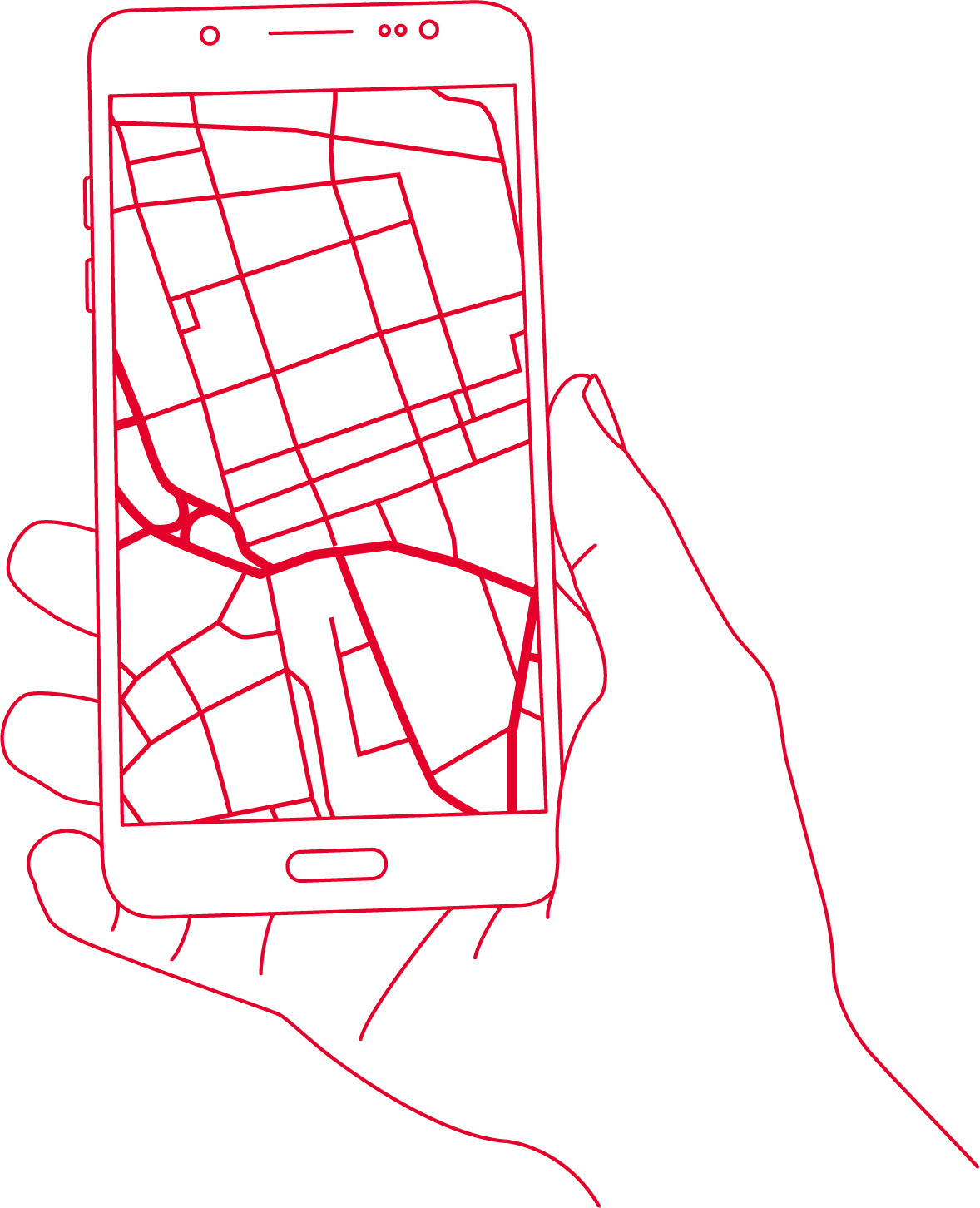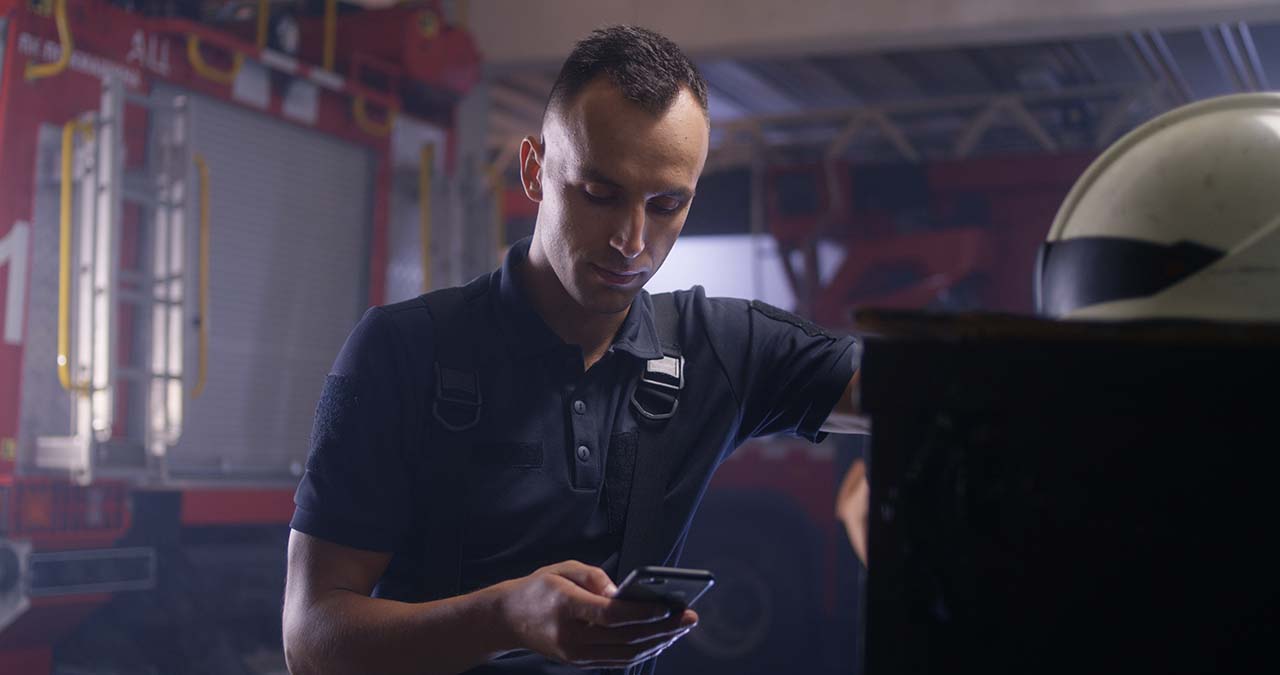eMRS – eurofunk Mobile Resource Services
Ein vielfacher Kundenwunsch wird umgesetzt
Bei den 2019 ins Leben gerufenen eurofunk Innovation Circles mit Industriekund*innen, vielen weiteren Gesprächen mit Public Kund*innen sowie diversen neuen Ausschreibungen war und ist ein Thema omnipräsent: Die Mobilität der Einsatzkräfte und die Möglichkeit des mobilen Zugriffs auf unterstützende digitale Services.
Mit dem 100 %-browserbasierten Einsatzleitsystem eOCS (eurofunk Operation Center Suite) ist bereits eine nicht-arbeitsplatzgebundene Nutzung über mobile Endgeräte möglich.
eOCS Command & Control ist mit seiner umfangreichen Funktionalität sowie dem workflow-orientierten User Interface auf die Prozesse der Einsatzannahme, Alarmierung/Auftragsvergabe sowie Einsatzführung/Begleitung und Dokumentation ausgerichtet. Die Anforderungen der Einsatzkräfte an eine mobile Applikation auf kleineren Endgeräten bedürfen allerdings einer darüber hinausgehenden Orientierung.
Integrationsmöglichkeit für ELDIS 3 und eOCS
Die Verwendung von eMRS ist sowohl in Verbindung mit ELDIS 3 (ab Version 4.0) als auch mit eOCS möglich. Zusätzlich ist die Nutzung von eMRS über seine offene Schnittstelle auch für andere Einsatzleitsysteme realisierbar.

Unterstützung durch die Applikation eocs PORTABLE
Die zu eMRS gehörige App eOCS PORTABLE ist für iOS und Android verfügbar und kann auf Smartphones sowie Tablets verwendet werden. Optional bietet sich zudem die Möglichkeit der Integration in bereits installierte Infotainment-Systeme, wie beispielsweise Fahrzeuge großer Automobilhersteller dies ermöglichen.
eMRS kann über folgende Varianten genutzt werden:
eMRS hosted by eurofunk
- Betrieb in den eurofunk-Rechenzentren
- Site2Site VPN-Verbindung zur Leitstelle
- Administrationszugriff durch Kund*innen über Web
eMRS-Betrieb durch Kund*innen
- Infrastruktur und Dienste werden direkt bei Kund*innen oder auf deren Cloud-Umgebung betrieben
- Projektspezifisches Mobile Device Management und Autorisierungsanbindung sind möglich
eMRS – Hauptanwendungsfälle für die Leitstelle
- Authentifizierung bzw. Autorisierung der Einsatzkräfte – teils mit Einbindung bereits evtl. vorhandener Services (LDAP, OAuth,..) sowie 2-Faktor-Mechanismen
- Dienstplan-gekoppelte bzw. tagesaktuelle Zuordnung von Einsatzkräften (Personen) zu Fahrzeugen durch vordefiniertes bzw. adhoc Pairing mittels QR-Code Scan oder manueller Auswahl der berechtigten Fahrzeuge
- Information der Einsatzkräfte über neue Einsätze mit allen relevanten Informationen (Einsatzort, Einsatzereignis, Zusatzdaten etc.) und/oder sich im Laufe der Bearbeitung ergebenden Änderungen mittels Push-Notifications
- Übermittlung des Abarbeitungsstatus (Gelesen, Akzeptiert, Fahrt zum Einsatzort, …) sowie der aktuellen Position an die Leitstelle
- Unterstützung der Einsatzkräfte bei der Anfahrt zum Einsatz- bzw. Zielort durch Routing (mit optionalem Blaulichtrouting)
- Unterstützung der Einsatzkräfte durch eine interaktive Kartenkomponente mit mehreren Kartenlayern sowie der Anzeige von weiteren Einsätzen und Einsatzkräften im näheren Umkreis
- Übermittlung von Informationen (Bilder, Dateien etc.) zum Zweck der Dokumentation bzw. Kommunikation
- Einsatzbezogene Messenger-Kommunikation zwischen den Einsatzkräften und der Leitstelle zum Austausch von Daten, Texten, Sprachnachrichten etc.
- Information der Einsatzkräfte über allgemeine, nicht-einsatzbezogene Informationen (News)
- Zugriffsmöglichkeit auf geplante bzw. vergangene Einsätze zu Recherchezwecken

Bereits während der gesamten Entwicklungsphase sollten auch tatsächliche Anwender*innen intensiv miteingebunden werden.
So sind wir nicht nur auf unsere im Entwicklungsteam erfahrenen Einsatzkräfte stolz, sondern auch darauf, dass wir direkt mit Kund*innen wie dem Roten Kreuz Oberösterreich oder der Berufsfeuerwehr Salzburg die Möglichkeit haben, einen gemeinsamen Pilotbetrieb durchführen zu können.
Ausblick
Im Jahr 2022 wird eMRS auch die Einsatzkräfte der Polizei Hessen als zusätzliches digitales Bindeglied zwischen Leitstelle und Einsatzkräfte schrittweise unterstützen.


